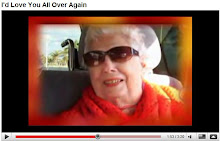Death of 91-year-old spotlights line between care and killing
Maria 'Concha' Lopez, living with her great-niece, dies weighing 35 pounds and covered with sores. Was the 91-year-old's death murder or natural causes?
By Maria L. La Ganga, Los Angeles Times June 2, 2011
Reporting from Madera, Calif. -- 'Don't leave me," Stephanie Hernandez implored, as she fumbled with her cellphone to dial 911. "I need you. I need you."
Hernandez had just changed her great-aunt's diaper and was coaxing her to take a sip of water when Maria "Concha" Lopez, 91, stopped breathing.
CPR was out of the question, Hernandez told the emergency dispatcher: "She's too fragile. We could break her, her bones." The dispatcher talked the distraught 26-year-old through the basics of mouth-to-mouth resuscitation.
But when firefighters and paramedics opened the door to the little house on South A Street that December morning, they were immediately overwhelmed. By the stench — urine, feces, rotting flesh. By the mess — soiled diapers, used bandages, a stained mattress.
Most of all, though, by Lopez's body. The bed-bound woman who'd suffered from dementia and shied away from doctors weighed just over 35 pounds and was covered in bedsores, some so deep they bared bone. A metal rod from hip surgery was visible.
Hernandez was arrested and then charged with murdering the woman she had bathed, fed and changed for three years. She would be put on trial, accused not of any overt violence against the woman who had raised her but of failure as a caregiver.
During five weeks of emotional testimony this spring, defense attorneys portrayed Hernandez as a loving niece whose meticulous efforts kept an old woman alive even as she lost 65% of her body weight. Projecting gruesome autopsy photos on a big white screen, the prosecutor described neglect so severe it amounted to criminal negligence.
In the end, the trial showcased the difficult questions facing doctors, courts and families today, when the "old old," 85 and up, are the fastest-growing segment of the population, when more than 43 million Americans care for aging relatives or friends and when neither science nor the law has kept pace.
What is elder abuse? When does inadequate care become criminal? Can the elderly be forced to seek help? And what exactly does a "normal" death look like?
"I would say that first responders and medical examiners haven't seen a lot of cases like this — yet," said Dr. Brad Stuart, chief medical officer for Sutter Care at Home and a researcher in the management of advanced illness. "But this is not going to be an unusual case in a few years."
It is April, mid-trial, and Hernandez reminisces from behind a thick plastic barrier in the visiting area of Madera County jail. She has been held here for more than a year and in the process lost custody of her 4-year-old daughter, Alyanna.
Hernandez had lived on South A Street in this hard-knocks farm town since she was 4 months old. Her mother, an agricultural worker, needed to go back to the fields and left the infant in the care of her four great-aunts — Guadalupe, Ramona, Frances and Concha Lopez.
Guadalupe retired from the fields to care for Hernandez but died when the girl was 12. Neither Guadalupe nor her sisters ever married.
"I was basically her daughter," says a tearful Hernandez. "Her last words were, 'I love you, Stephanie' in the hospital."
Madera Community Hospital is less than a mile from the jail. Hernandez knows the squat, tan facility well; she spent long days and nights there as her great-aunts fell to the scourges of age.
"Ramona declined in my senior year in high school, '01," says Hernandez. "She had a massive heart attack and a mild stroke at home. I was there. She had fallen.... I picked her up and called 911."
Frances died in 2003. Ramona went three years later. Concha Lopez had watched her sisters die in medical facilities and made her family promise to spare her such an end.
Then she broke her hip.
Hernandez had been working her way through Fresno City College by selling cellphones. She left school when she became pregnant with Alyanna in 2006, and her family pressed her into caring for Lopez.
Read the complete story in the L.A. Times
















No comments:
Post a Comment